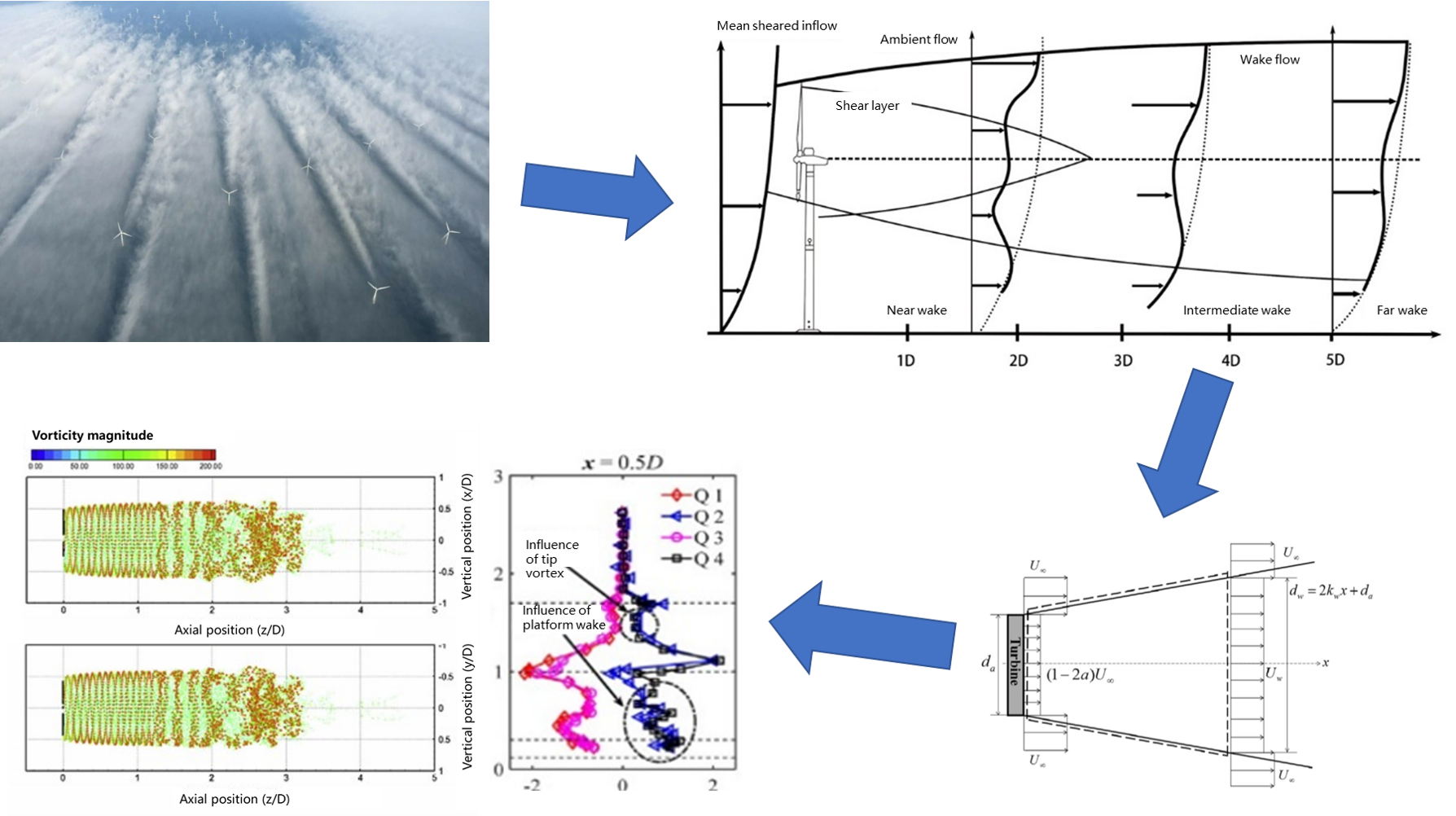 Open Access
Open Access
REVIEW
Review on Research about Wake Effects of Offshore Wind Turbines
1 Southern Marine Science and Engineering Guangdong Laboratory (Zhanjiang), Zhanjiang, 524013, China
2 CSIS (Chongqing) Haizhuang Wind Power Equipment Co., Ltd., Chongqing, 401122, China
3 Offshore Technology Center of CCS, Tianjin, 300457, China
4 School of Energy and Power Engineering, Inner Mongolia University of Technology, Hohhot, 010051, China
5 Institute of Engineering Thermophysics, Chinese Academy of Sciences, Beijing, 100190, China
* Corresponding Author: Yingjian Yang. Email:
(This article belongs to the Special Issue: Wind Energy Development and Utilization)
Energy Engineering 2022, 119(4), 1341-1360. https://doi.org/10.32604/ee.2022.019150
Received 06 September 2021; Accepted 14 January 2022; Issue published 23 May 2022
Abstract
In recent years, the construction of offshore wind farms is developing rapidly. As the wake effect of the upstream wind turbines seriously affect the performance of the downstream wind turbines, the wake effect of offshore wind turbines has become one of the research hotspots. First, this article reviews the research methods of wake effects, including CFD numerical simulation method, wind turbine wake model based on roughness and engineering wake models. However, there is no general model that can be used directly. Then it puts forward some factors that affect the wake of offshore wind turbines. The turbulence intensity in offshore wind fields is lower than that in onshore wind fields. This makes the wake recovery length of offshore wind turbines longer than that of onshore wind turbines. Floating offshore wind turbines are simultaneously disturbed by wind loads and wave loads. Unsteady movement of the platform caused by wave loads. It affects the development and changes of the wake of wind turbines. In this regard, the focus of research on the wake effects of offshore wind farms will be the proposal of accurate prediction models for the wake effects of sea wind farms.Graphic Abstract

Keywords
Cite This Article
 Copyright © 2022 The Author(s). Published by Tech Science Press.
Copyright © 2022 The Author(s). Published by Tech Science Press.This work is licensed under a Creative Commons Attribution 4.0 International License , which permits unrestricted use, distribution, and reproduction in any medium, provided the original work is properly cited.


 Submit a Paper
Submit a Paper Propose a Special lssue
Propose a Special lssue View Full Text
View Full Text Download PDF
Download PDF Downloads
Downloads
 Citation Tools
Citation Tools